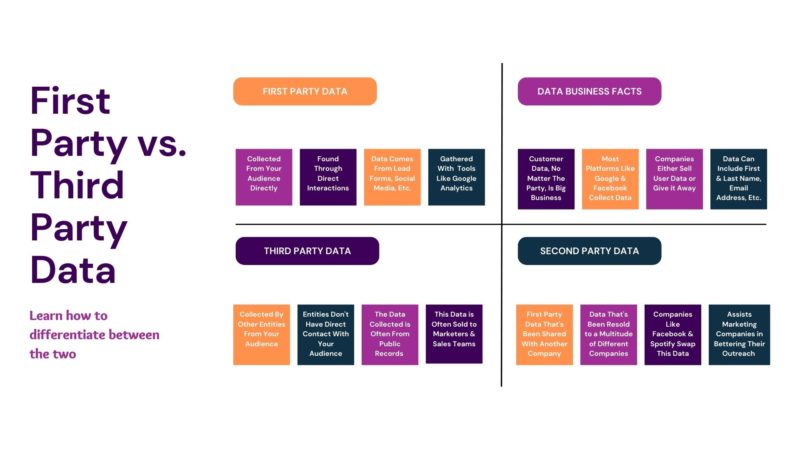
By Harnessing Intent Data, Law Firms Can Zero In On Companies That Want Their Services
When people need a particular B2B service, they often read articles, visit websites, download whitepapers and attend webinars to
Intent Data
As the name implies, intent data reveals a buyer’s or a group of buyers’ interest in a product or service and predicts what they are likely to purchase. By capturing and analyzing intent data, law firms can zero in on those prospects who are interested in a particular service and put customized advertisements and other content in front of them to move these prospects further along the continuum to becoming customers. There are different categories of intent data, which we’ll dive into below.
Implicit vs. Explicit
Intent data can be implicit, meaning it is inferred from the behavior of the user. For instance, if users from a particular company do several web searches and download a whitepaper on the California Consumer Privacy Act (CCPA), it may be inferred that they want to learn more about how the newly expanded law will impact their company’s operations. Or intent data can be explicit, such as when someone comes to your website and fills out a contact form saying they need help with setting up a corporate entity.
First-Party vs. Third-Party
Intent data generated from prospects’ activity on your website is known as first-party data. For instance, if your firm holds a webinar on the CCPA and people register for it, the registration data is considered first-party. Conversely, third-party data is purchased from vendors who collect intent data from buyers’ activity on various publishers’ websites. For example, if someone goes on Law.com and reads an article on the CCPA or watches a video on the topic on the Thomson Reuters website, that data is available from a variety of third-party vendors. A law firm that advises companies on the CCPA can use both the first-party and third-party intent data to inform their marketing efforts to convert these prospects into clients.
Company vs. Individual Data
It’s important to note that third-party data is generally only available at the company level, as opposed to the individual level. Rather than knowing John Smith at Company ABC read an article or downloaded an eBook on partnership agreements from a third-party site, you will only know that someone or multiple people at Company ABC took those actions. By contrast, if John Smith goes onto your website and registers for a webinar or a newsletter, you can track his behavior on an individual level. But absent a registration, vendors can only provide intent data by company.
Gathering Data
To collect third-party intent data, intent data providers work in collaboration with content-rich publishers that place a pixel on their website or app so that when businesses come to view the content, their behavior will be trackable. With both first-party and third-party data sources, an automated process is used to tag content based on topics, track buyer interactions, and build intent data based on these interactions. This data can help law firms generate leads from companies that are ready to buy but may not have directly interacted with them online. Intent data can also indicate when businesses are looking at competing law firms and their services. Law firms can use this information to prevent losing a client or compete for business they may otherwise lose.
When considering an intent data provider, law firms need to review the specific features of each and select one that most closely matches their needs. Good2bsocial maintains a unique partnership with Bombora, the only Intent data Cooperative comprising more than 5,000 of the top B2B on the web, 70% of which are EXCLUSIVE to the Co-op. Bombora ensures access to the most accurate reflection of a prospect’s digital journey and the magnitude of their intent, presenting law firms with an unprecedented opportunity to engage with clients and prospects at a time when they’re most interested in the services the firm provides.
For more information on our partnership with Bombora, click here to learn more.
Takeaway:
Online marketing tools are becoming increasingly useful in helping law firms gain a competitive edge. By harnessing intent data, you can optimize your marketing efforts by providing prospects with meaningful content. Steer them to your website and develop a relationship with them before your competitors even know they’re in the market for legal services.
Subscribe to our weekly newsletter to stay on top of the latest developments in legal digital marketing and learn best practices and tips to enhance your marketing and business development efforts at your firm.
This article was originally published by Forbes Agency Council on January 12, 2021.
Let’s get started, and finished
Contact us to get started on your Technology Strength Scorecard and energize your business development process.
Contact Us

